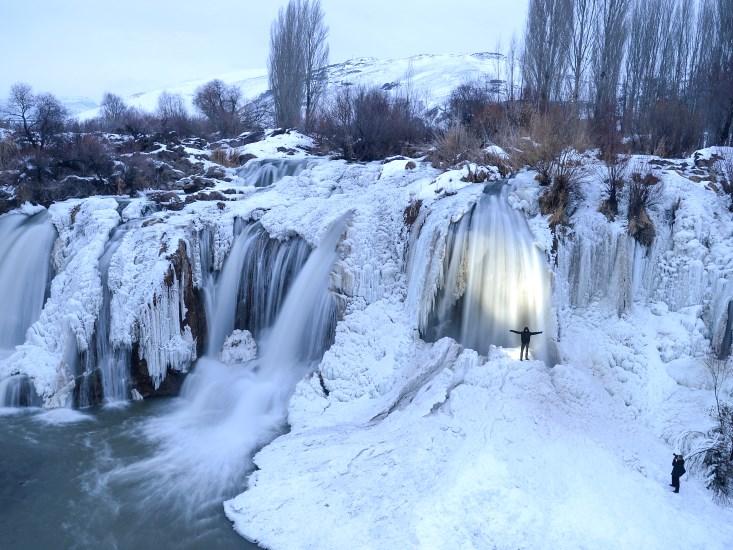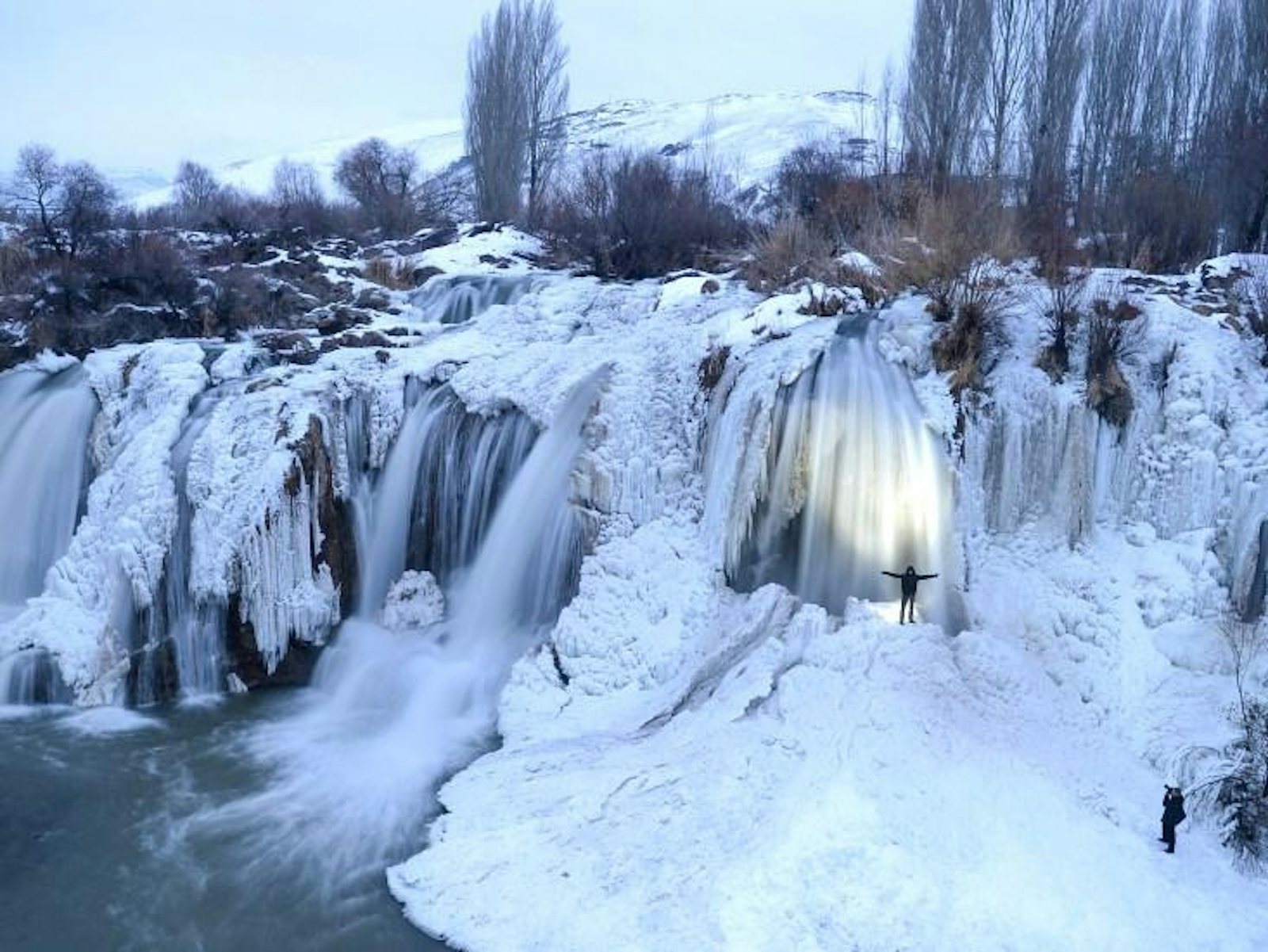Tonight, at 11:48 PM Eastern Time, is the moment of the winter solstice, when the Northern Hemisphere is pointed as far away from the sun as it ever gets. It will be the longest night of the year, and tomorrow will be the day with the fewest hours of sunlight.

As most people know, this marks the official beginning of winter. It’s one of the familiar features of the end of the year, like reports of holiday sales and box-office receipts—a reliable news story for a time when many offices and schools are winding down and news tends to be in short supply.
At first, the rationale for beginning winter tonight seems quite natural. What could be more reasonable than basing the season on an astronomical event that people have been closely monitoring for thousands of years? But the assumption that this is the objective beginning of winter is an illusion—a layer of scientific precision papered over a more complicated, subjective question. And like the color on a candy cane, the layer of science doesn’t go very deep.
The more you think about our common definition of winter, the less sense it makes. The biggest problem is temperature. Winter is supposed to be cold, but a look at the data makes it clear: The coldest part of the year has begun already. For the Northern Hemisphere overall, the coldest quarter of the year begins on December 8 and ends on March 9. For the U.S., the coldest quarter begins on December 3 and ends on March 4. Our astronomical winter includes most of March and excludes most of December. Yet for almost every location in northern temperate latitudes—New York, San Francisco, Paris, Moscow, Delhi, Tokyo—December is colder than March. (Places in tropical latitudes generally don’t have much temperature variation throughout the year.)
One easy way to better match winter to the coldest days would be to include all of December and exclude all of March. In fact, this is the definition of winter—at least, according to meteorologists in most of the world. “Winter is the coldest season, and one can define that, and it aligns fairly well with December-January-February,” says Kevin Trenberth, a researcher at the National Center for Atmospheric Research. For obvious reasons, meteorologists are more focused on the temperature aspect of seasons than the amount of sunlight. They also prefer meteorological seasons for a less obvious reason: A lot of climate data is in monthly format, which coincides easily with seasons based on calendar months.
That brings up another advantage of meteorological winter: It’s appealingly simple. December through February. Unlike astronomical winter, it doesn’t begin, haphazardly, in the middle of the month. And as you may remember, the solstice moves to different dates depending on Earth’s slightly irregular path around the sun, so winter’s beginning bounces between between December 21 and 22—and even, rarely, to December 20 or 23. Not good-old, predictable meteorological winter. Unless the mystery of when winter starts is a major source of annual excitement for you, it would be easier just to stick with December through February.
It’s not clear why we use the current scheme at all. Where there was a win-win option, we went with the lose-lose one.
There is one other reasonable argument against meteorological winter. Maybe some people are really attached to the idea that winter is the time when daylight is short and nights are long. But in that case, our current seasonal calendar makes even less sense! By starting the season on the solstice, winter excludes the middle of December, when daylight is very scarce, yet includes the middle of March, when daytime and nighttime are almost exactly equal. Considering that, it would make more sense for astronomical winter to start in early November, halfway between the autumnal equinox and the winter solstice, and end in early February. That way it would include only the shortest days.
And in fact, lots of cultures have defined the seasons that way. Many European peoples used to celebrate Midsummer (as in, a time to dream of love and crossdressing) right around the solstice, which marked the middle of summer rather than its beginning. Yule was a pagan holiday celebrating midwinter, near the winter solstice, and was therefore easily absorbed into Christmas, just a few days later. Japan’s traditional calendar also specifies a winter beginning in early November and ending in early February.
But thanks to artificial lighting, the precise rising and setting of the sun is not so important to us as it was to our pre-modern predecessors; for people who tap on bright screens hours after the sun goes down, it makes more sense to base our seasons on weather. (If you’re really adamant about astronomical calendars, there are modern pagans you can celebrate with.)
That leads us back to meteorological winter, which, by including December, is both colder and darker than our current winter. Considering that, it’s not clear why we use the current scheme at all. Where there was a win-win option, we went with the lose-lose one. “It makes no sense whatsoever to start winter then [on the solstice],” says Trenberth, who actually took the time to write up a scientific paper showing why our current system is so silly (pdf).
In truth, it’s unlikely the common definition of seasons will change anytime soon; Trenberth published his argument for meteorological seasons back in 1983, and it seems to have been about as successful as the push for the U.S. to adopt the metric system. Still, the spirit of science demands that we turn a critical view at arbitrary conventions and definitions. Even if we’re stuck with illogical seasons for now, we should remember to question the illogic. Someday we may rise up, in the spirit of free thought, and throw off the yoke of our oppressive seasons.
The metric system is another question entirely.






























